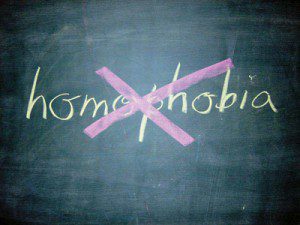April 30th 2012.
 Researchers found that among the college freshmen in their study, more than one-fifth of those who described themselves as very straight showed signs of covert homosexuality on the me-cued trials. And these “discrepant” (secretly gay) students happened to be the ones most likely to have expressed anti-gay sentiments on the pre-test survey.
Researchers found that among the college freshmen in their study, more than one-fifth of those who described themselves as very straight showed signs of covert homosexuality on the me-cued trials. And these “discrepant” (secretly gay) students happened to be the ones most likely to have expressed anti-gay sentiments on the pre-test survey.
Should we trust this interpretation of the data? In the Times op-ed, the authors claim that the reaction-time task “reliably distinguishes between self-identified straight individuals and those who self-identify as lesbian, gay or bisexual.” Their formal write-up of the work for the Journal of Personality and Social Psychology is a bit less sanguine on the method, citing just one other study that has used this approach, and saying it “showed moderate correspondence with participants’ self-reported sexual orientation.”
…
Read the whole story at:
By Daniel Engber